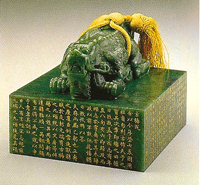CONNOISSEURSHIP & VALUATION
-Most-Up-to-Date Guide Book (In Progress)
"Wei Yang’s Guide to Chinese Jade" (In Progress) centers on identification, dating and authentication of Chinese jade. It offers a road map to the appreciation of Chinese jade via media identification, tool mark affiliations and the reinterpretation of the antique and the regional. It discusses the impact of the mystic power embodied by a jade, from burial to decorative, via a set of shapes (discs, tubes of both circular and square cross-section) derived from stone tools, and new ways of creating decoration changed the visual appearance of jade carving. By focusing on the transformation of antique jades, such as the classical forms of Chinese bronzes, and the reinterpretative efforts invested by artists of all periods and the invention of tools and technology, the guidebook helps English readers appreciate Chinese jades of various forms from the perspective of a Chinese art connoisseur. Its discussion on the presentation of a set of traditional forms, the embodiment of symbolic significance in decoration, and the trends and tastes of Chinese material culture, sheds light on how traditional forms and decorative motifs were transformed to reflects new aesthetics and trends. A survey of the market appreciation of the original, the imitations and the fakes addresses the authentication of Chinese antique jades from a connoisseur’s perspective.
This guidebook offers a road map for those who wish to develop an expertise in Chinese Jade. It demonstrates how historical, cultural, and aesthetic properties, ranking of a jade’s physical attributes on value and how to overcome the difficulties in appraising Chinese jades.

